"SLC-S25/W1-Movie Snapshots|Around the world (Mrs. Chatterjee vs. Norway")
"If you want a happy ending, that depends on where you stop your story, pick up the camera and the movie continue... Orson Welles"
Around the world!
Here, I present a movie called "Mrs. Chatterjee vs. Norway"
| Move | Details |
|---|---|
| Name of movie | "Mrs. Chatterjee vs. Norway" |
| Year released | 17 March, 2023 |
| Movie time Duration | 2 hours 13 minutes and 4 seconds |
| Movie writers | Sameer Satija, Ashima Chibber, Rahul Handa |
| Movie director | Ashima Chibber |
| Starring | Rani Mukerji as Debika Chatterjee, Jim Sarbh a Norwegian lawyer, Neena Gupta as Debika's mother, Anirban Bhattacharya as Aniruddha Chatterjee |
| Country | India |
The main idea of the movie
"Mrs. Chatterjee vs. Norway" is an emotionally based movie based on a true story that portrays the struggle of a mother fighting for the release of her children, that shows a mother's love for her children. An immigrant mother fights for her children's custody after they're taken away by Norwegian child-welfare authorities.
Cultural Issues:
The movie highlights the differences between Indian parenting styles and Norwegian customs, showing how these cultural gaps can result in misunderstandings and legal issues.
Motherhood and Love:
"Mrs. Chatterjee vs Norway" showcases a mother's relentless love and commitment to safeguard her children, illustrating the extreme measures she will take for their safety.
Legal System:
The film portrays the difficulties and intricacies of dealing with a foreign legal system, especially in matters concerning child welfare.
Inspiration from Real Life:
This movie draws inspiration from the true story of Sagarika Chakraborty and her husband, an Indian couple whose children were placed in foster care in Norway.
Meet the characters
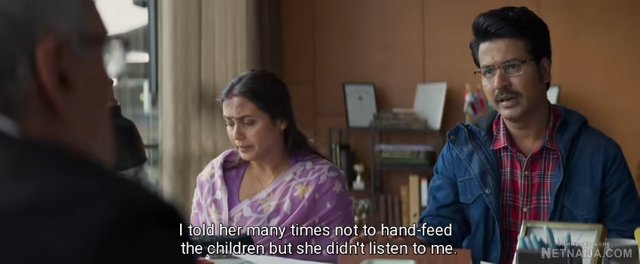 | Debika and her husband |
|---|
| Debika in the court room | 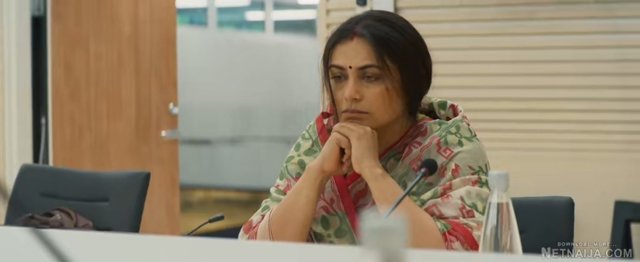 |
|---|
 | A Norway lawyer for Debika |
|---|
| The two child-welfare employees | 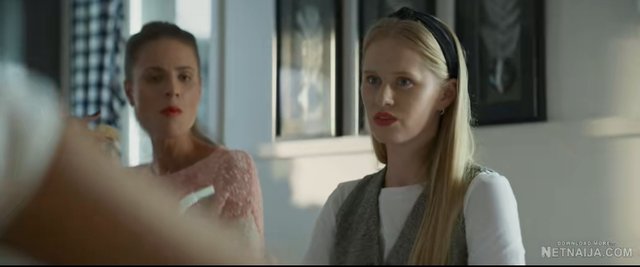 |
|---|
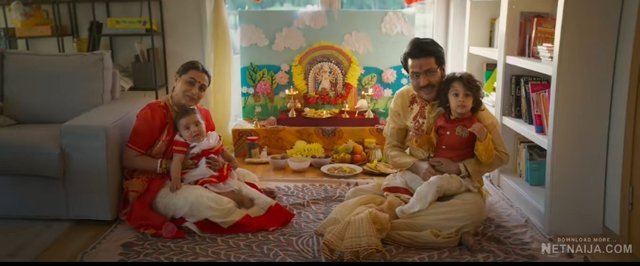 | The family before separation |
|---|
| Debika and her father | 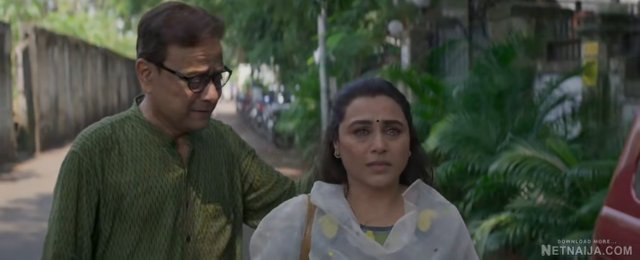 |
|---|
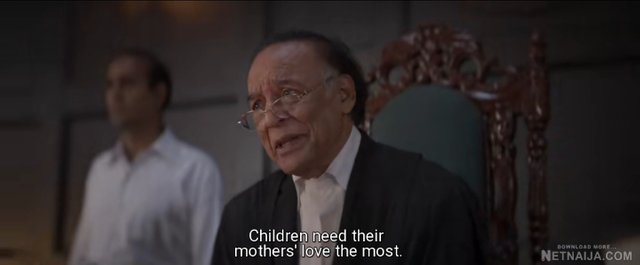 | The lawyer that gave back her children |
|---|
| Debika and her children | 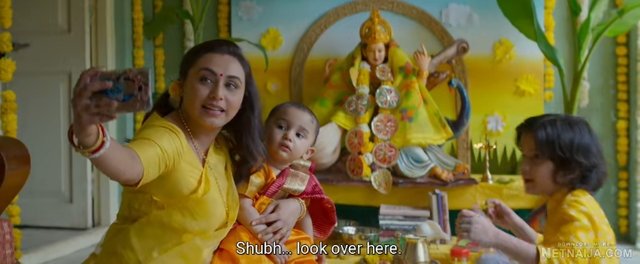 |
|---|
The plot and setting of the movie
Life in Norway & Rising Tensions
Debika (Rani Mukerji) and her husband Aniruddha, a traditional Indian immigrant couple, move to Stavanger with their young son Shubh and five-month-old daughter Suchi. Debika is a dedicated stay-at-home mom, while Aniruddha is often distant, concentrating on work and getting citizenship.
Their parenting methods—co-sleeping, feeding babies with their hands, and using traditional tika—are viewed as loving in their culture, but raise concerns among ethnocentric Norwegian child-welfare officials.
Surveillance & Separation
A neighbor’s report leads to visits from Barnevernet (Norwegian Child Welfare Services). Social workers Sia and Matilda carry out a 10-week evaluation, examining Debika’s hands-on parenting and Aniruddha’s lack of engagement.
Cultural differences clash: feeding with bare hands, co-sleeping, and the mother wearing a tika are seen as neglect or abuse.
Authorities suddenly take both children—Shubh and Suchi—away from the family home, claiming parental unfitness.
Mother’s Frantic Fight
Debika files legal appeals in Norway, fighting against cultural bias and false claims—Barnevernet describes her as unstable and unfit. Her emotional reactions in court unintentionally support these allegations.
Daniel Ciupek (Jim Sarbh), a government-appointed lawyer of Indian descent, argues that the welfare service is underfunded and their motives might be financially motivated.
However, emotional testimonies and video evidence of Debika’s breakdown work against her, and the Norwegian courts favor Barnevernet.
Diplomatic & Legal Turnaround
In Norway, the government's actions lead to a political backlash. India's Foreign Minister, Neena Gupta, steps in—applying pressure on Oslo and using stalled telecom agreements as leverage.
Debika also seeks legal action in India. Her second lawyer, Balaji Gauri, successfully contests the Norwegian ruling in Indian courts.
At the same time, strong support from South Asians in Norway and increasing diplomatic activity compel officials to rethink their stance.
Reunion and Reflection
A pressured agreement results in Debika reuniting with her children after a long and emotionally taxing struggle.
The film ends on a touching note: Debika’s experience not only showcases the conflict of cultural values but also addresses issues of patriarchal marriage, emotional abuse, and systemic bias.
The narrative concludes with a bittersweet realization: although the children have returned, the emotional wounds from the experience remain.
Movie setting
The setting of Mrs. Chatterjee vs Norway is vital for the emotional and cultural conflicts in the narrative.
Stavanger, Norway
It’s a beautiful yet cold and emotionally detached place, representing the cultural and institutional challenges Debika encounters. The film depicts Norwegian child welfare offices, courtrooms, and foster care facilities—sterile, formal environments that sharply contrast with Debika’s warm, chaotic household.
The streets and public areas illustrate Debika’s growing isolation in a foreign country where her cultural values are misinterpreted or undervalued.
Chatterjee’s Family Apartment (Norway)
Debika and her family’s cozy home becomes the focal point of conflict. It is adorned with symbols of Indian culture—religious figures, traditional food, and bright colors—highlighting the cultural clash with Norway’s minimalist and rule-oriented system.
This space shifts from one of love to one of trauma after the children are taken away.
Kolkata, India
As the legal struggle escalates, the story briefly moves to India. Scenes here feature Indian courtrooms, government offices, and Debika’s support system. The warmth, crowds, and familiarity of Kolkata stand in stark contrast to Norway’s cold legal framework, symbolizing home, identity, and emotional support.
Embassy & Diplomatic Settings
Several scenes depict Indian government involvement, including settings at the Indian embassy and high-level political talks. These locations illustrate how personal issues become political, emphasizing the diplomatic strains between India and Norway.
•Norway symbolizes order, legality, and misunderstanding.
•India embodies chaos, warmth, and cultural belonging.
If you were the Director of the movie what would you do differently?
Everything about the movie was good, the director did a fantastic job. Perhaps, I would have added my touch if I happen to direct the movie.
| Area | What to Change |
|---|---|
| Tone | Reduce melodrama, increase emotional control. Creates a more authentic and relatable experience. |
| Characters | Complex husband and child welfare workers steers clear of stereotypes. |
| Story Structure | Implement nonlinear flashbacks creates suspense. |
| Visuals | Incorporate metaphors and contrasting colors/spaces enriches significance. |
| Music | Simple score, influenced by culture boosts engagement. |
| Dialogue | Encourage more cross-cultural dialogue fosters comprehension. |
| Perspective | Insights from the children's perspective heightens emotional effect. |
I invite @mariami @aviral123 @pandora2010
All images used are screenshots from my mobile!




https://x.com/ninapenda2023/status/1934811244168364503?t=BNUA0gKQA8AFzREtwagG5g&s=19
Thank you for participating in this challenge of season 25.
Oh I remember this movie, so emotional that I cried from start to finish. Indeed a mother's love for her children knows no boundaries. Did you notice how her husband betrayed her? Oh my!
Amazing choice of movie! Kudos to indians for this movie.
I love how you have careful explained the setting side by side with its plots given a great understanding and interpretation of this movie. I think you are qualified to become a great movie director from the points you have elaborated that you will change if you were the director of the movie.. cheers!